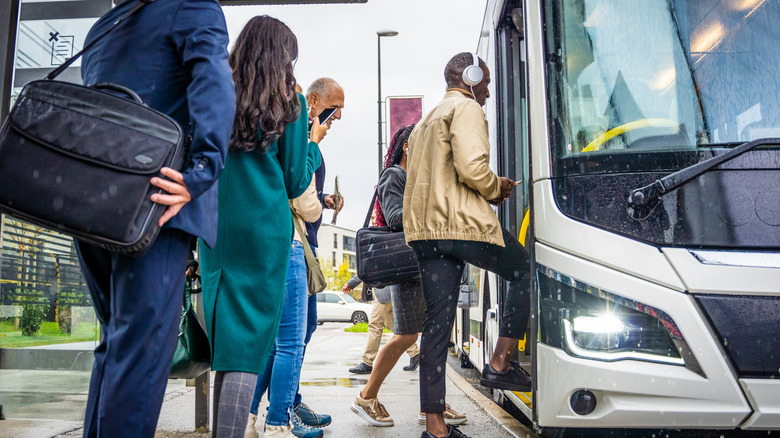Rick Steves Shares How To Get Around Europe Like A Local And It's Surprisingly Convenient
Public transportation rather than automobiles, as favored in car-centric America, is the default mode of getting around most European cities. And while many today have excellent metro trains and subway stations that will make your jaw drop, there are limits to where rails can go. According to Rick Steves, "Most cities and towns in Europe have public buses that, while designed primarily for locals' use, are often a great help to visitors." This is because bus stops are closer together than train stations, and can often take you to parts of the city where train lines haven't been built.
In fact, sometimes traveling by bus is nearly as good as taking a city tour (at a fraction of the price). Public buses are made to be affordable, since they're primarily used by commuters. "And since you're not underground," adds Steves, "it's easier to stay oriented, see the landmarks, and enjoy the vibrant street life out the window." You might even wind up passing a hidden gem you'd have otherwise missed.
Beyond that, buses are also easy to board, since many cities — including Barcelona, Milan, Paris, and all of the Netherlands — now allow contactless payments via credit card or smartphone, rather than requiring cash or tickets. Once you've gotten the hang of the logistics of urban bus travel, you'll realize getting around Europe has never been easier. Plus, buses are also a wonderful place to people-watch, see how the locals dress, and learn what fads are popular with the young people. Just stay wary: As Steves knows from personal experience, half of all pickpocketing in Europe happens on public transit.
Steves' tips for bus travel will make your transit easy
In days of old, navigating foreign bus routes with analog maps created more confusion than was worth a tourist's while. But, today, there are plenty of smartphone apps that make planning travel a breeze. "I've always considered Europe's city buses worth the hassle," says Steves, "but now that my phone gives me step-by-step instructions for getting from A to B by the fastest/easiest route, the hassle is all but gone." Specificall, he recommends Citymapper as his preferred mapping app in Europe; though Google Maps will work just as well for route planning. Some cities even have their own local transit apps with individual line schedules and notices for route closures or delays.
If you're not in a city that offers contactless payment on its transport, try buying a day pass or multi-ride ticket to save money. This will save you the hassle of having to dig for exact change when you board. Closely watching what the locals do when they board and disembark is great for understanding the etiquette and rules. Do you need to validate your ticket when you get on? Does your contactless payment require a "tap off" when you depart?
Once on board, don't get too comfy. You'll need to be paying attention for when it's time for your stop, and this can be easy to miss in light of all the stimulation a bus ride surrounds you with — especially if announcements in English aren't available. To avoid issues, Steves recommends following your progress along on your phone's map so that you know when to signal for your stop (typically by pulling a cord or pushing a button). If you miss it, don't panic — stay flexible and leave room for spontaneity.

